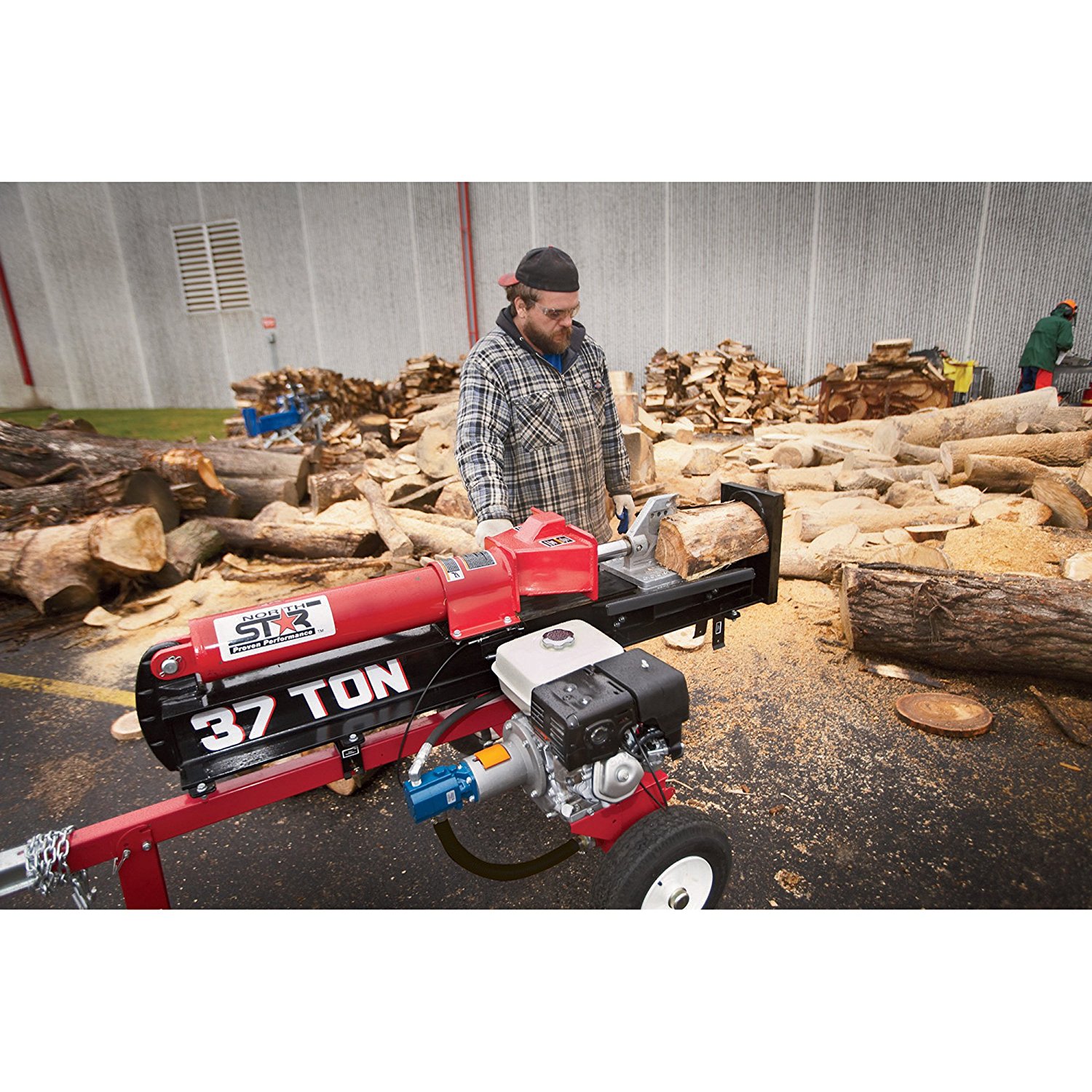- No Obligations
- Stop Paying Too Much For Your Contractor
- No Spam Calling
- Screened & ID Checked Contractors only!
Fast Growing Trees for Your Garden
2
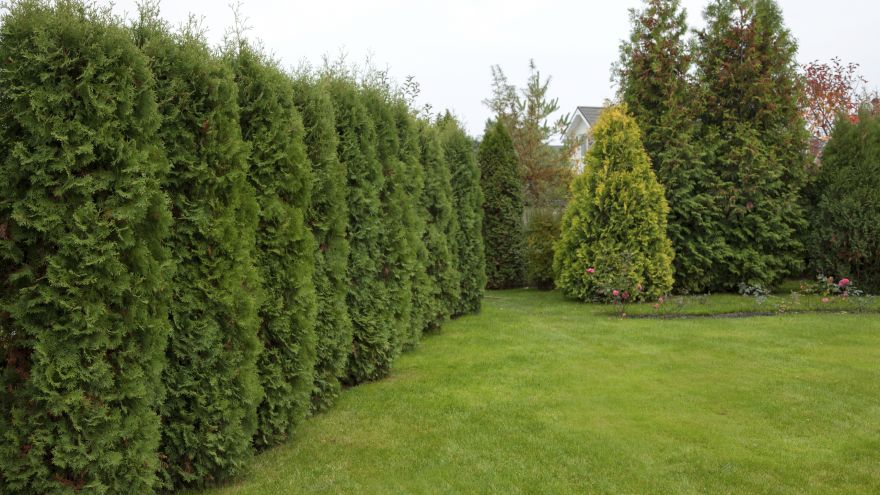 Fast Growing Trees for Your Garden
earlyexperts.net
Fast Growing Trees for Your Garden
earlyexperts.net
For some people patience is not enough, and they need trees to grow as fast as they can. Planting a tree is something that has a permanence about it, and as it could survive for generations and stand for hundreds of years. Why would you want a tree to grow quickly? One of the main reasons is to provide some privacy as quickly as possible. You may need to provide a screen to block nosy neighbors or the sound from a busy road. If a tree has had to be cut down due to disease, then you may need something to replace it, and a fast growing tree will fill the gap as quickly as possible. As people move home more frequently than in the past, they want to appreciate a mature garden while they are living in the property, and not have to wait.
Knowing trees, I understand the meaning of patience – Author, Hal Borland.
Trees add a sense of solidity to a property, and give shelter to wildlife, improve the quality of the air, and conserve water, not to mention moderate the micro-climate around your home. Fast growing trees may be the answer to your immediate requirements, but they do come with some problems, which must be addressed. Some varieties of fast growing trees have a weak wood structure, which means they are susceptible to diseases and pests and do not hold up well in violent storms. They can also have an invasive root system, which expands to feed faster tree growth. Hence, fast growing trees can generally have shorter lifespans than trees that take longer to mature.
When looking to choose a fast growing tree for your garden, when you go to the nursery read the label on the sapling very carefully. It will explain how tall the tree is expected to grow. When the label says ‘fifty feet’ really understand how tall that is, and if it fits in the place you want to put it. It may be a lot taller than you need or want. Remember, once planted a tree is not easily moved, so consider how much room it will need and whether it will become a hazard to your home or power lines when it fully matures. The last thing you will want to do is to chop it down and start again.
Trees for the Larger Garden
Here are some suggestions for fast growing trees that work in larger spaces.
Japanese Cedar
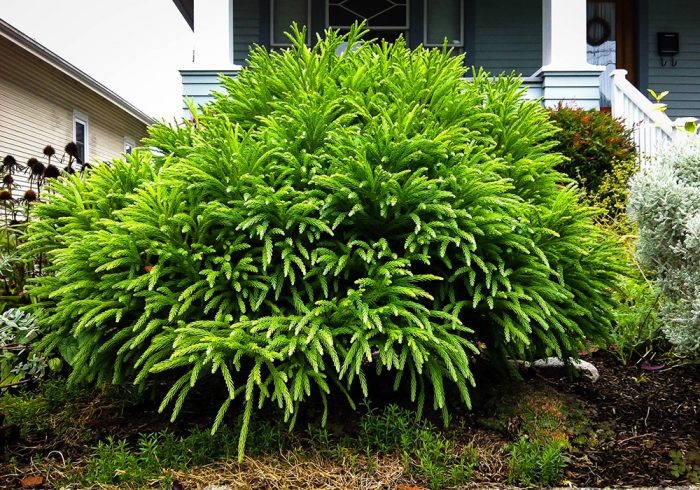
This is a great screening tree, which grows quickly and is hardy. The feather-like foliage of the Japanese Cedar develops a purple tinge in the cold weather. Unlike some other screening trees, the Japanese Cedar is not threatened by any serious disease problems. It also can live in a partially shaded area and does not need full sunlight to flourish. The pyramid shape of the Japanese Cedar does not need pruning and gives interest all year round.
- Size after 10 years – 20 feet (6m); Size at maturity – 50 feet (16m)
Tulip Poplar

The Tulip Poplar grows quickly in full sun or partial shade and is resistant to damage from pests. It is not advisable to plant the Tulip Poplar close to your home or have the branches extend over the roof, as in high winds small tree branches have a tendency to fall. In the spring the tree has yellow blooms that add some bright color to any garden.
- Size after 10 years – 25 feet (8m); Size at maturity – 90 feet (30m).
Redbud
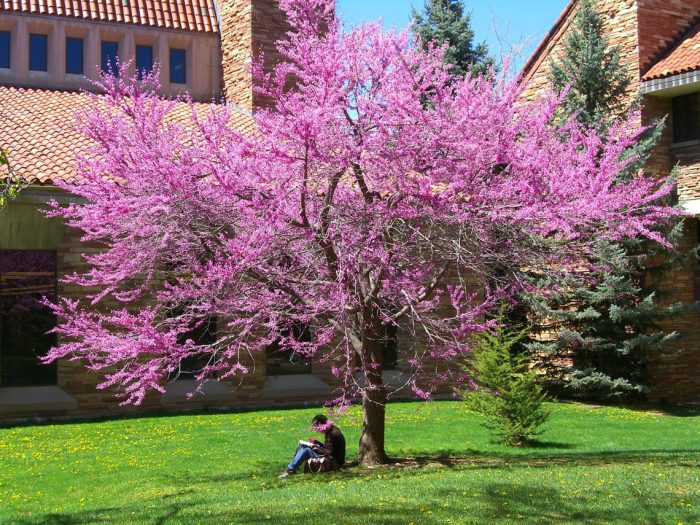
This is a true classic American tree. Before the leaves appear in early spring, bright magenta flowers appear on the branches. The heart-shaped leaves give a rainbow of yellow, red, orange, and purple colors in the fall. The great thing about the Redbud is that it is tolerant of most soils and light conditions, and does not attract insects. Pruning of dead branches will keep the tree healthy for decades.
- Size after 10 years – 20 feet (6m); Size at maturity – 30 feet (10m).
Littleleaf Linden

The Littleleaf Linden is a good choice for urban environments because of its tolerance of poor soils and shade and is often used by local authorities for street planting. The tree is highly adaptable and can be easily pruned into a hedge or screen. In the summer the tree is covered with creamy yellow flowers, which can be a magnet for bees. One of its drawbacks is that it is susceptible to insects, and can be affected by mildew and leaf spots.
- Size after 10 years – 22 feet (7m); Size at maturity – 70 feet (22m).
Amur Maple
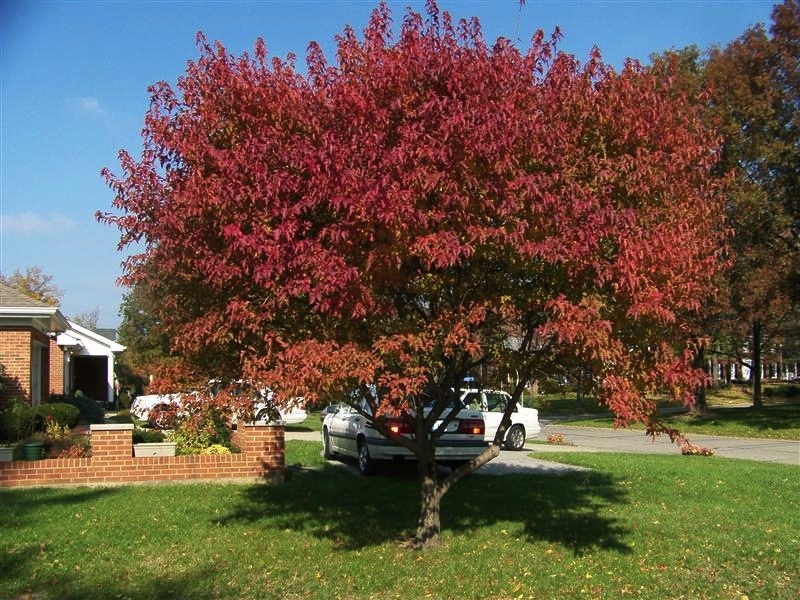
For a stunning-looking tree that gives much over three seasons, then no need to look any further than the Amur Maple. This versatile, multistemmed tree blossoms with small, exquisite yellow flowers in the spring, has a rich leafy green canopy in the summer, which turns to a deep red color in the fall. As a stand-alone tree, this could be the centerpiece of any garden. The tree does get affected by pests, but not enough to worry about seriously.
- Size after 10 years – 20 feet (6m); Size at maturity – 20 feet (6m).
Japanese Zelkova

The Japanese Zelkova has been touted as the replacement for the American Elm, as it is resistant to Dutch elm disease. The tree is not without its problems, as it is affected by some tree diseases, but its bark and foliage make up for it. As the tree matures, its gray/silver bark falls away, leaving a brown/orange mottled bark underneath. It has a brilliant display of leaves in the fall, as they turn red.
- Size after 10 years – 25 feet (8m); Size at maturity – 80 feet (18m).
Trees for a smaller garden
Not all of us have enough room for some of the larger trees we have looked at. Here are a few suggestions for trees that work well in smaller spaces, and are equally fast growing. They have a smaller spread than those trees already suggested.
Mountain Ash
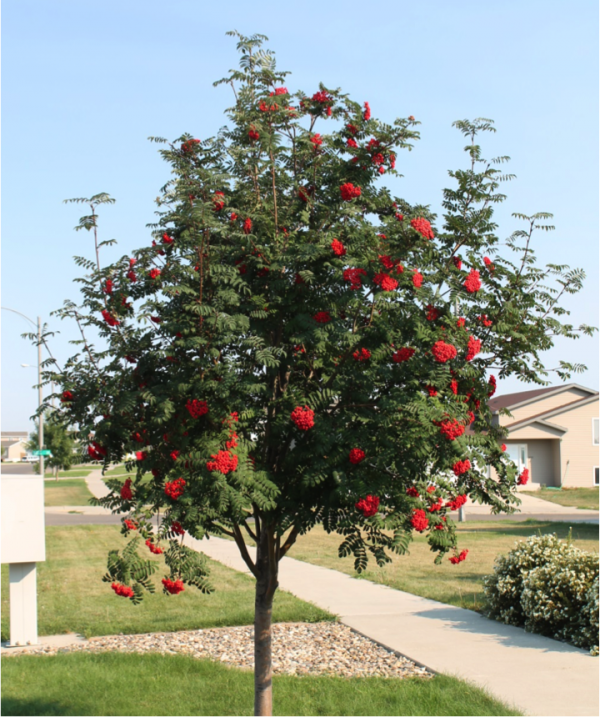
A native British tree that is fast growing in various soil conditions. In the spring the tree can be covered with white flowers, which in summer turn to berries.
These berries are attractive to birds, and so the Mountain Ash works well in a wildlife garden. In the fall, they turn to an attractive shade of yellow. The tree needs to be carefully maintained as it is susceptible to insects and pests.
- Size after 10 years – 20 feet (6m); Size at maturity – 45 feet (15m).
Silver Birch

The Silver Birch is a favorite among garden designers, because of its speedy growth, and attractive color. The multistemmed trees can be planted alone or in groups. In winter, the white trunks look particularly good and highlight any planting that may surround the tree base.
- Size after 10 years – 20 feet (6m); Size at maturity – 55 feet (18m).
Hornbeam
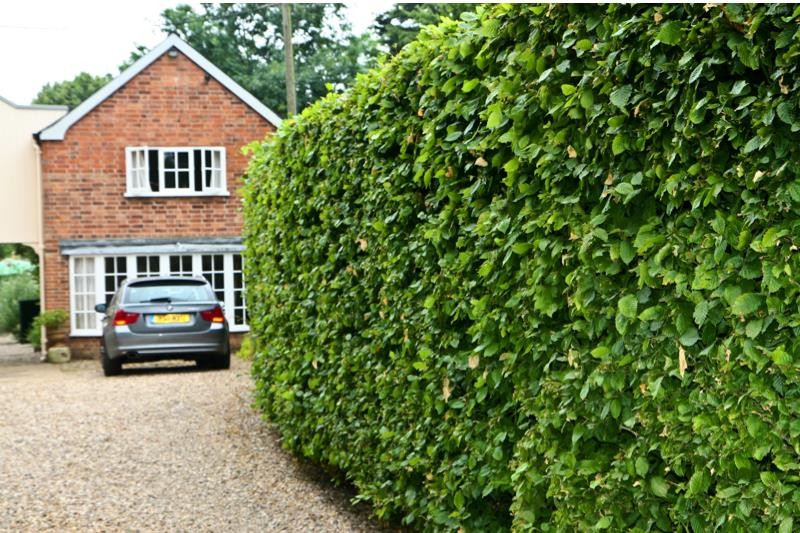
There are a number of varieties of Hornbeam that can suit smaller gardens. With a pyramid shape, they tend to have a structured look, which works well in a more formal setting. As the tree matures, the spread increases faster than the height. In the fall, the crinkly leaves on the tree are a riot of color.
- Size after 10 years – 20 feet (6m); Size at maturity – 45 feet (15m)
Holm Oak
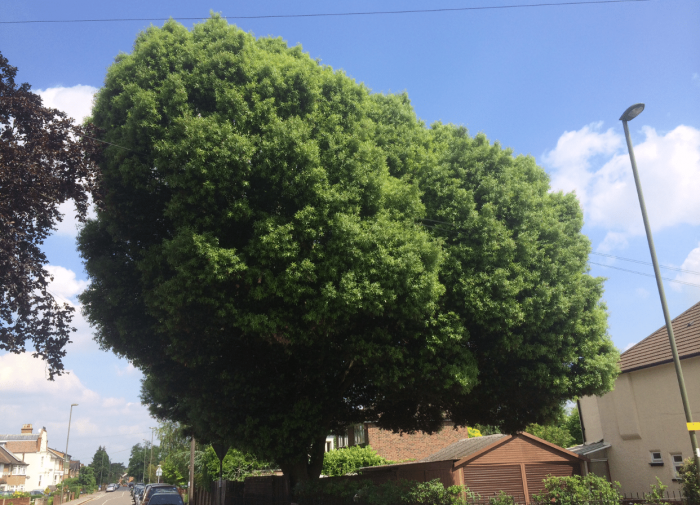
A Mediterranean native tree, the Holm Oak has a domed shape, which lends itself to successful topiary. It can blend in well with native trees and has small leaves shaped like holly. The Holm Oak is an evergreen, so you do not get the change of color in the fall before the leaves drop for winter.
- Size after 10 years – 15 feet (5m); Size at maturity – 40 feet (12m).
Trees to avoid
Not every fast-growing tree is a good prospect for a garden. Some have been heavily marketed for their speed of growth, but come with some severe drawbacks. These trees all have some major faults which make them unsuitable for fast growing replacements or new planting. The most serious problems include weak wood, invasive roots, susceptibility to pests and diseases, and their relatively short lifespan.
Leyland Cypress

If you are looking for a tree that will grow as high as a five-story office building, then choose the Leyland Cypress, but most of us have no use for a garden tree that grows so tall. With a life expectancy of 25-30 years, no soon as the tree reached maturity, then it is on its way out. Also, the Leyland Cypress is susceptible to a number of diseases and pests, and the only way for them to be controlled entirely is by spraying. The cost of spraying a 50-foot tree can be very expensive. Despite the hype, this tree is not recommended.
Lombardy Poplar

Another tree that carries a big red warning sign is the Lombardy Poplar. The tree certainly grows fast, between three and four feet a year, and by the time it reaches maturity at about 20 years it can stand 100 feet (35m) tall. Unfortunately, by the time it reaches that age, the Lombardy Polar is already beginning to die back. The tall column-like trees are structurally weak, and their branches can easily break off in high winds, or if they are weighed with snow or ice. The root system is invasive, and when the leaves shed they can create an enormous mess.
Bradford Pear
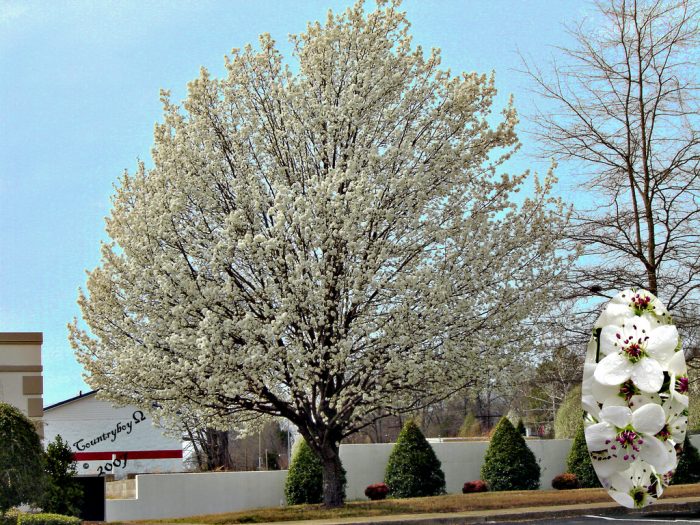
The only good thing going for the Bradford Pear is that it looks good. Otherwise, the tree carries lots of danger signals. The spring bloom is breathtaking along with the fall color. Unfortunately, the tree has a lot of the problems associated with growing fast. The wood is weak, and who sections of the trunk can split during high winds, or when covered with snow and ice. With a life expectancy of just 15 years, this is really just a ‘disposable’ tree.
Sycamore

If any nurseryman suggests you plant a Sycamore, then you know you are in the wrong place. They are magnificent trees, but need so much care and attention, that it makes planting them more a labor of love than a joy. These trees can grow to 100 feet tall, with the diameter of the trunk up to 8 feet. However, that still does not make a great sturdy tree. The Sycamore can suffer from a number of diseases such as canker, mildew, and leaf spot, and be home to boring insects, beetles, caterpillars and mites. If you want to keep your garden looking neat and tidy, then the detritus from a Sycamore will severely test your patience.





